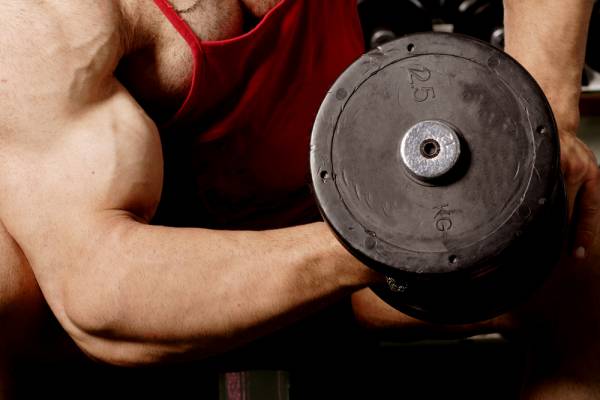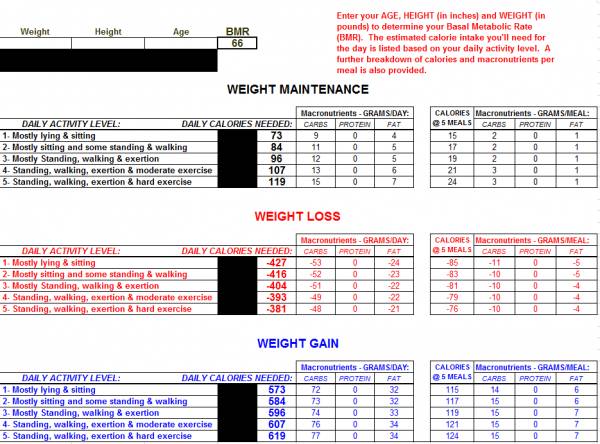This is a continuation from my previous article that discussed bulking up for the skinny guy. It still comes down to these components:
This is a continuation from my previous article that discussed bulking up for the skinny guy. It still comes down to these components:
- Stimulating all major muscles of the body.
- Allowing adequate recovery time between training sessions.
- Consuming proper nutrients during the recovery process.
- Using progressive overload over the structured training period.
- And last but not least, understanding your genetic limitations.
An Ignorant Approach
That stated, I myself took an ignorant approach through my graduate school years at Western Illinois University. There, I spent many hours training for a decathlon event and yet hoped to grow larger and more muscular.
Training for a decathlon is in no way associated with the singular goal of gaining muscle mass and scale weight. You run a lot. You work on skill technique a lot. You strength train, but not with the goal of increasing muscle mass. In other words, your goal is to improve ability in the ten events with little regard to growing larger.
Hungry for Knowledge and Truth
At age 25, I obtained an assistant strength-coaching position at the University of Florida. I took my track and field training background into that position. But I knew I was now dealing with other sports, so I stuck my nose to the grindstone to become familiar with what was going on with other sports relative to the college strength and conditioning field.
In addition to religiously reading all issues of Scholastic Coach magazine – a monthly publication geared to coaches seeking training advice – I perused all issues of the NSCA’s Strength and Conditioning Journal. I was hungry for knowledge and the truth.
The Scholastic Coach issues contained advertisements for Nautilus training machines. This, of course, meant nothing to me because it was not geared to barbell and dumbbell training. Hey, I was ignorant and clueless.
Fortunately, I was able to eat properly at the university’s training table. I had plenty of calories to choose from. In addition, I had access to excellent strength-training equipment and I worked very hard on it.

A group of athletes sitting down to eat together.
So, being the inquisitive person I am and Hell-bent on seeking the truth at the time, I open-mindedly read all the info I could get my hands on and applied logic to it. After all, there must be a logical stimulus for muscle growth, so what exactly was it?
My Mass-Gaining Strength Routine
- Three-day total-body training alternated with a four-day upper body and lower body split routine each performed in six-week segments.
- Barbell squats, plate-load leg presses, and Nautilus multi-exercise machine belt-squats.
- Chest presses with barbells, dumbbells, and machines.
- Low rows with dumbbells and plate-load machines.
- Overhead presses with dumbbells, barbells, and machines.
- Chin ups and pulldowns – both close and wide grip – on a selectorized machine.
From June 1985 to December 1985, my body weight increased from 175 to 190 pounds. It made sense. I worked all major muscle groups with high-intensity protocols, ate like a champion, and rested adequately between workouts. Over time I grew more muscle and added scale weight. No drugs and no supplements.

To be honest, it was embarrassing that I was previously unaware of the simplicity of the equation. But even at that time there was not a lot of useful information out there (no Internet) that would directly guide me toward reasonable weight gain. Bicep curls, bench presses, and haphazardly performing rows and pulldowns, half-assed squats, and leg extensions didn’t cut it.
That was my old approach – one yet used by many today. It’s the wrong approach for growing optimal body weight.
The Rules for Growing Muscle
- Work all muscles. Upper body push and pull at various angles. Those are relatively easy. Don’t ignore the lower-body. Squats, dead lifts, lunges, and leg presses. These are relatively difficult as they work the largest muscle structures of the body. Don’t forget your backside. Hamstring curls, RDLS, and glute-hamstring raises. They are just as important.
- Eat. You need extra calories to grow muscle and gain weight. Eat five to six times each day. Aside from appropriate breakfast, lunch, and dinner, toss in a mid-morning and afternoon feeding, preferably including both a good carbohydrate and protein source.
My Daily Calorie Requirement Calculator
Your muscles are always in a state of flux, so keep the proper nutrients incoming. If you don’t know how much to eat, then educate yourself. There is plenty on information out there that tells you how many calories to consume based on your current body weight, activity level, basal metabolism, height, and age.
I have constructed a sensible approach based on your body weight, age, height, and your activity level. Think about it. If you’re 6’5″ and 290 pounds, you obviously need more calories as compared to someone 5’8″ and 170 pounds. My chart can get you near the proper number of calories to consume based on the aforementioned and your daily activity level.

Click to Download My Daily Calorie Requirement Excel File
Enter your body weight (pounds), height (inches), and age. It will give you your base-line calories that will maintain your current status (your basal metabolic rate is basically the amount of calories you need to remain alive). I have created a tab for women and a tab for men. And, alternatively, you can use the lower section for weight gain, if that’s your goal.
If you have a low-activity day (i.e., sitting on your ass most of the day) use the low end estimated calorie needs. If you are active and also engage in kick-butt strength training, use the high end estimated calorie needs.
For example, a 150-pound male who is 68” tall (5’8”) and nineteen years of age would have an estimated basal metabolic rate of 1,735 calories. Regarding activity level, if it’s a level-5 day (standing, walking, exertion, and hard exercise during the day) that would require approximately 3,623 calories to fuel and also build muscle. If you’re taking a rest day (level 2, mostly sitting and some standing and walking), then the estimated calories to fuel you and grow additional muscle would be 2,712. Understand these are estimates, but it will get you close to your daily caloric needs based on how active you are.
Allow for Growth to Occur
Allow for growth to occur. You’ve trained hard and followed proper nutritional intake. Now let it happen over the biological clock. Sleep and rest hard. They are necessary. Too many analogies can be used here. Don’t pick the scab off until the wound fully heals. Don’t apply a second coat of paint until the initial coat fully dries.
Yes, it may take days. Don’t feel like a wimp because you’re not training on a rest day. Remember, work hard, eat well, and rest hard. It’s pretty sound advice when you’re seeking to grow muscle.
Click to Download My Daily Calorie Requirement Excel File
Photo 1 “Off Season Training” by Blue Skyz Studios Attribution-NonCommercial License.
Photo 2 “P1000128” by Athletes in Action. Attribution-NonCommercial License.
Photo 3 courtesy of Shutterstock.






